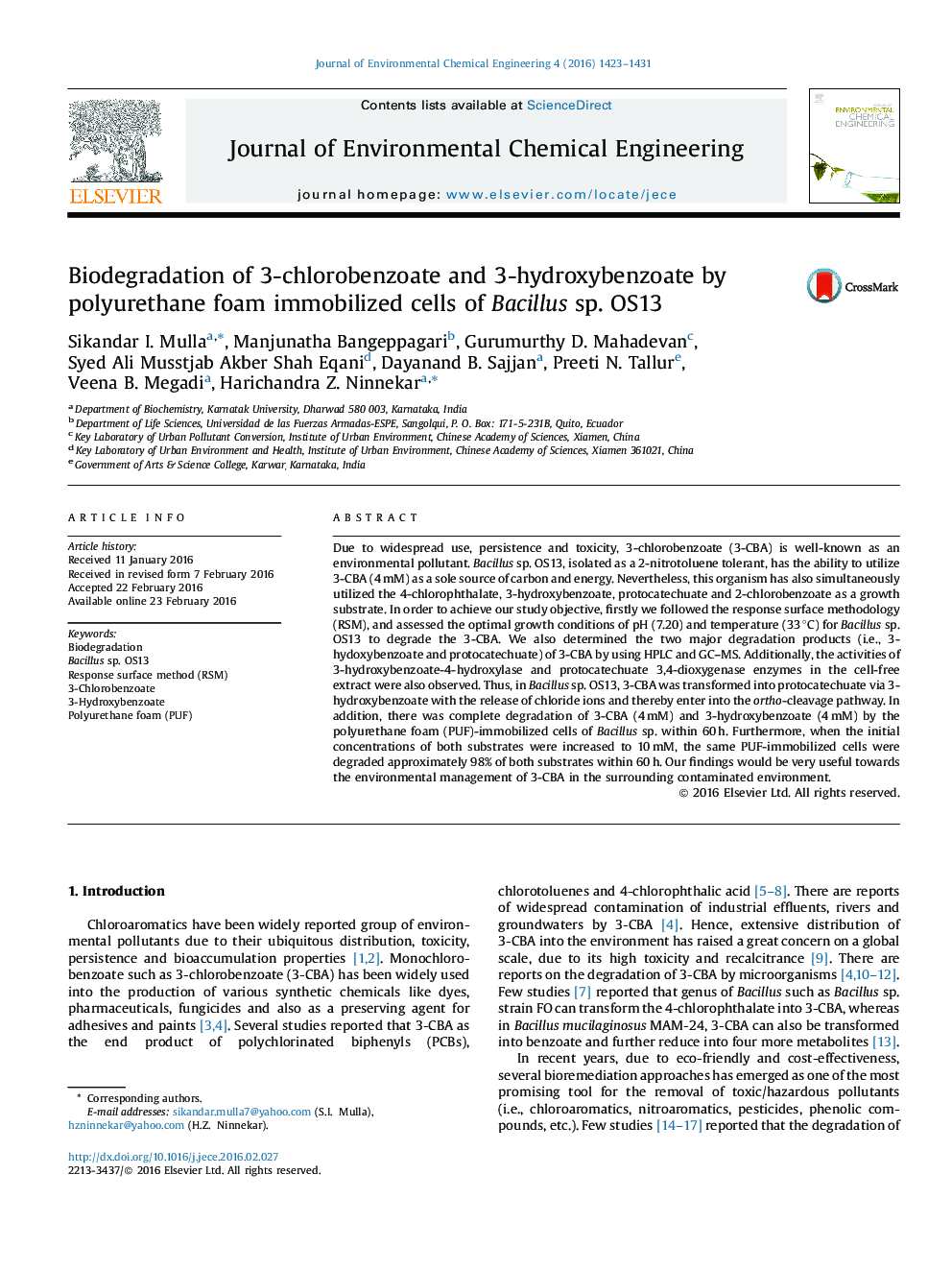| کد مقاله | کد نشریه | سال انتشار | مقاله انگلیسی | نسخه تمام متن |
|---|---|---|---|---|
| 221625 | 464263 | 2016 | 9 صفحه PDF | دانلود رایگان |
• We proposed a pathway for the degradation of 3-CBA by Bacillus sp. OS13.
• 3-CBA degradation occurs via 3-HBA to PCA with the release of chloride ions.
• PUF-immobilized organism degrades 3-CBA (4 mM and 10 mM) within 60 h.
• PUF-immobilized organism degrades 3-HBA (4 mM and 10 mM) within 60 h.
Due to widespread use, persistence and toxicity, 3-chlorobenzoate (3-CBA) is well-known as an environmental pollutant. Bacillus sp. OS13, isolated as a 2-nitrotoluene tolerant, has the ability to utilize 3-CBA (4 mM) as a sole source of carbon and energy. Nevertheless, this organism has also simultaneously utilized the 4-chlorophthalate, 3-hydroxybenzoate, protocatechuate and 2-chlorobenzoate as a growth substrate. In order to achieve our study objective, firstly we followed the response surface methodology (RSM), and assessed the optimal growth conditions of pH (7.20) and temperature (33 °C) for Bacillus sp. OS13 to degrade the 3-CBA. We also determined the two major degradation products (i.e., 3-hydoxybenzoate and protocatechuate) of 3-CBA by using HPLC and GC–MS. Additionally, the activities of 3-hydroxybenzoate-4-hydroxylase and protocatechuate 3,4-dioxygenase enzymes in the cell-free extract were also observed. Thus, in Bacillus sp. OS13, 3-CBA was transformed into protocatechuate via 3-hydroxybenzoate with the release of chloride ions and thereby enter into the ortho-cleavage pathway. In addition, there was complete degradation of 3-CBA (4 mM) and 3-hydroxybenzoate (4 mM) by the polyurethane foam (PUF)-immobilized cells of Bacillus sp. within 60 h. Furthermore, when the initial concentrations of both substrates were increased to 10 mM, the same PUF-immobilized cells were degraded approximately 98% of both substrates within 60 h. Our findings would be very useful towards the environmental management of 3-CBA in the surrounding contaminated environment.
Journal: Journal of Environmental Chemical Engineering - Volume 4, Issue 2, June 2016, Pages 1423–1431
